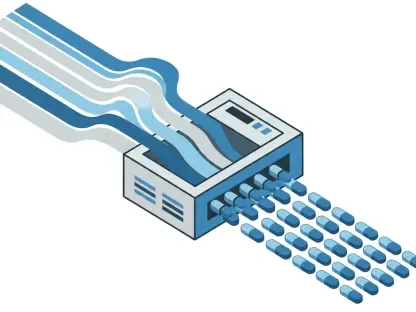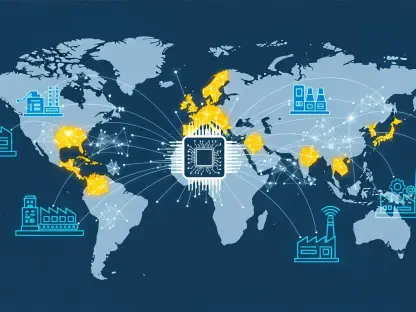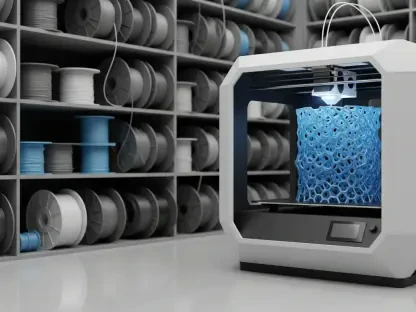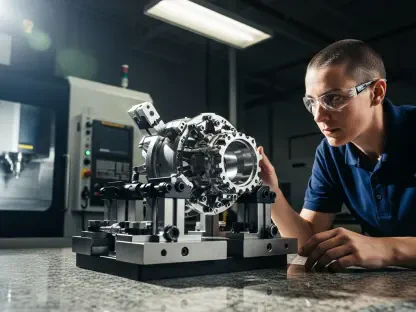The automotive industry is experiencing a profound shift, with technology reshaping the very foundation of how vehicles operate, and at the core of this transformation is the Automotive System ICs Market. Integrated circuits (ICs) are the critical components enabling a wide array of functionalities, from advanced safety mechanisms to seamless connectivity in today’s vehicles. As of 2024, this market holds a valuation of $19.6 billion, with projections estimating a climb to $32.71 billion by 2032, driven by a consistent compound annual growth rate (CAGR) of 6.61%. This impressive trajectory underscores the pivotal role that ICs play in modern transportation. Far beyond mere hardware, these chips are the backbone of innovations that promise safer, more efficient, and environmentally friendly driving experiences. As vehicles evolve into complex digital ecosystems, the reliance on sophisticated ICs to manage everything from power distribution to real-time data processing becomes increasingly evident, setting the stage for a dynamic future in automotive technology.
Forces Fueling Market Expansion
The surge in the Automotive ICs Market is largely propelled by the global pivot toward electrification and automation in transportation. Electric vehicles (EVs) and hybrids are at the forefront, creating a pressing need for ICs that manage battery systems and optimize energy usage. Simultaneously, Advanced Driver Assistance Systems (ADAS) and autonomous driving technologies demand high-performance chips capable of handling intricate tasks such as sensor integration and rapid decision-making. These advancements are not mere fads but are becoming integral to vehicle design, driven by consumer expectations for safety and efficiency. Regulatory pressures to reduce emissions further amplify the push for ICs that support cleaner technologies, positioning this market as a cornerstone of the automotive industry’s evolution over the coming years.
Another significant factor driving growth is the rising emphasis on vehicle connectivity. Modern automobiles are transforming into hubs of digital interaction, with infotainment systems, telematics, and in-car networking becoming standard features. This shift necessitates ICs that ensure smooth communication and an enhanced user experience. The integration of artificial intelligence (AI) and the Internet of Things (IoT) into vehicles adds another layer of complexity, requiring chips that can process vast amounts of data in real time. As these technologies mature, the demand for innovative ICs will continue to escalate, reflecting a broader trend toward smarter, more connected transportation solutions that cater to both functionality and user satisfaction in an increasingly digital world.
Regional Dynamics and Growth Hotspots
Geographically, the Automotive ICs Market reveals a landscape of varied opportunities and robust growth. Asia-Pacific stands out as the dominant force, fueled by massive vehicle production in key countries like China, Japan, and India. This region benefits from a growing consumer base eager for advanced vehicle features, alongside significant investments in automotive technology. The sheer volume of manufacturing, combined with rapid adoption of electric and connected vehicles, positions Asia-Pacific as the fastest-growing market. Government policies supporting technological innovation and infrastructure development further bolster this region’s lead, making it a critical hub for IC manufacturers looking to capitalize on expanding demand through 2032.
In contrast, North America and Europe contribute significantly through their focus on cutting-edge advancements and regulatory frameworks. North America excels with early adoption of autonomous driving systems and a strong emphasis on safety enhancements, driving demand for specialized ICs. Europe, meanwhile, is shaped by stringent emission and safety standards, alongside a thriving EV market that necessitates efficient power management solutions. Both regions showcase a commitment to innovation, with substantial research efforts aimed at integrating next-generation technologies into vehicles. While smaller in scale, emerging markets in South America and the Middle East & Africa are also gaining traction, supported by growing automotive industries and initiatives to promote sustainable and connected transportation options.
Competitive Arena and Innovation Trends
The competitive environment of the Automotive ICs Market is marked by relentless innovation and strategic maneuvering among industry leaders. Major players such as NXP Semiconductors, Infineon Technologies, and Texas Instruments are at the forefront, channeling significant resources into research and development to pioneer solutions for EV power systems, autonomous functionalities, and connectivity features. These companies leverage collaborations and partnerships to stay ahead, ensuring their offerings align with the rapid pace of technological change. Their focus on developing versatile and high-efficiency ICs reflects a broader industry trend toward addressing the multifaceted needs of modern vehicles, from energy optimization to enhanced safety protocols.
Beyond the giants, a host of smaller firms and niche innovators are carving out their space by targeting specific applications within the market. Companies like ON Semiconductor and Analog Devices are making strides in areas such as power electronics and communication-focused ICs, adding diversity to the competitive landscape. This dynamic interplay fosters a culture of continuous improvement, where adaptability and forward-thinking design are essential for maintaining relevance. The emphasis on tailored solutions for emerging automotive trends, such as IoT integration and semi-autonomous systems, highlights how competition drives technological breakthroughs, ultimately benefiting the end consumer with more reliable and sophisticated vehicle systems.
Future Opportunities and Market Potential
Looking ahead, the Automotive ICs Market brims with potential for growth across several key areas. The ongoing transition to eco-friendly vehicles presents a significant opportunity for manufacturers to develop ICs that enhance energy efficiency and support advanced battery management systems. As governments worldwide push for reduced carbon footprints through incentives and regulations, the demand for such specialized chips is expected to rise sharply. This trend aligns with broader sustainability goals, positioning ICs as vital components in the quest for greener transportation solutions that minimize environmental impact while maintaining performance standards through the projected period to 2032.
Equally promising is the expanding realm of autonomous and semi-autonomous driving technologies, which rely heavily on sophisticated ICs for safe and reliable operation. These systems require chips capable of processing complex data streams from sensors and cameras in real time, a challenge that spurs innovation in semiconductor design. Additionally, the proliferation of connected vehicles and IoT-enabled solutions opens new avenues for ICs that facilitate seamless communication and data handling. As vehicles become integral parts of larger digital networks, the need for robust and secure connectivity solutions will drive further investment in this space, offering manufacturers a chance to shape the future of mobility with cutting-edge technology.
Navigating Challenges Toward Sustained Growth
Despite the optimistic outlook, the Automotive ICs Market faces hurdles that could temper its ascent if not addressed strategically. Supply chain disruptions remain a pressing concern, often impacting the timely availability of critical components and driving up costs. The high expense of research and development also poses a barrier, particularly for smaller players striving to keep pace with industry giants. Moreover, the technical complexity of integrating advanced ICs into vehicle architectures demands significant expertise and investment, which can strain resources. Tackling these issues requires a concerted effort to streamline supply chains and foster collaborations that distribute costs and expertise across the industry, ensuring steady progress.
To capitalize on the market’s vast potential, stakeholders must prioritize innovation while mitigating these challenges through adaptive strategies. Investing in scalable manufacturing processes can help address supply constraints, while partnerships between semiconductor firms and automotive manufacturers can accelerate the development of tailored solutions. Emphasizing modular IC designs that simplify integration into diverse vehicle platforms offers another path forward. By focusing on such actionable steps, the industry can navigate obstacles and sustain the momentum of growth, ensuring that ICs continue to underpin the transformative advancements in automotive technology well into the future.









